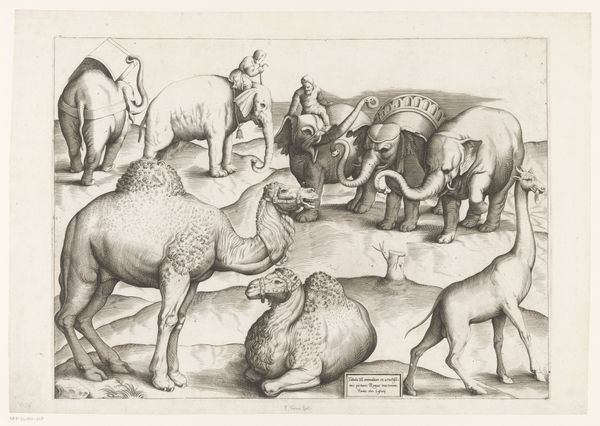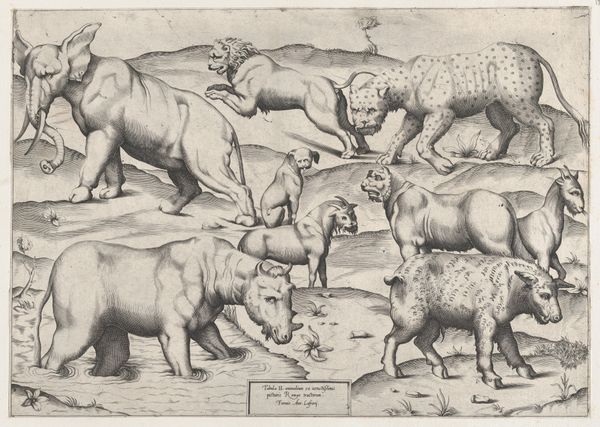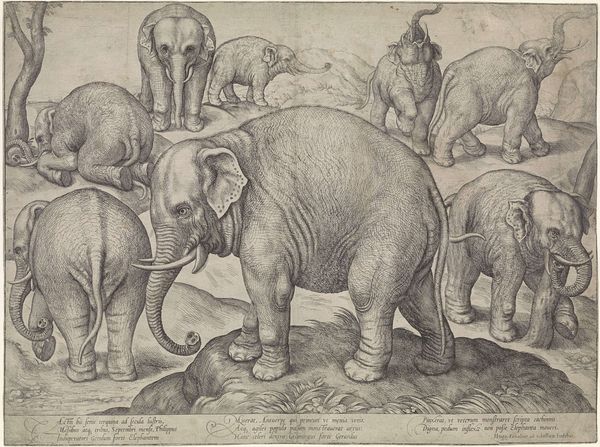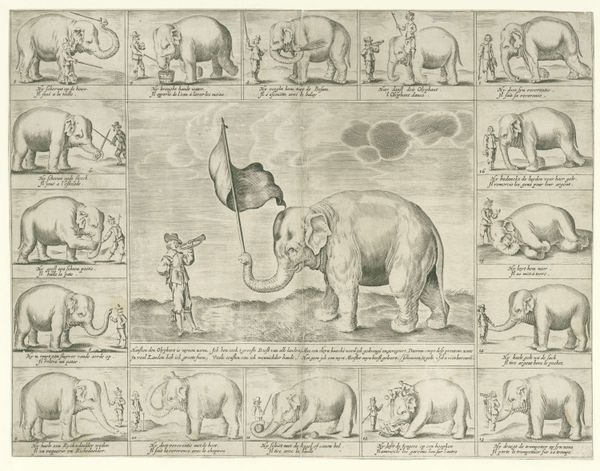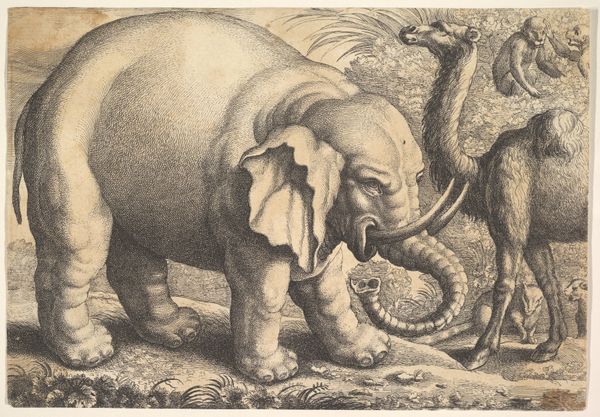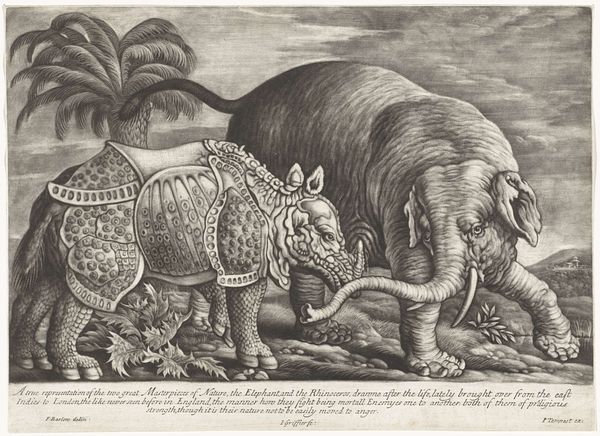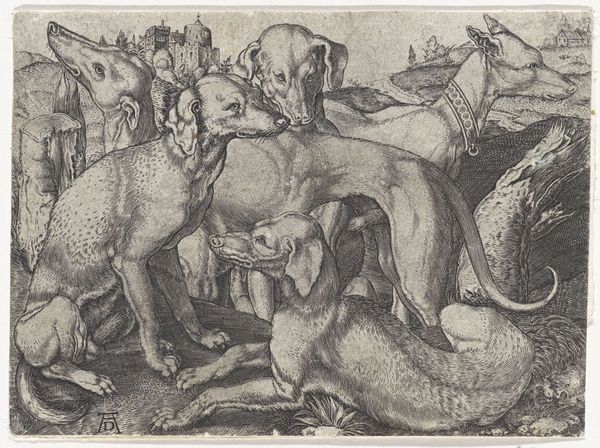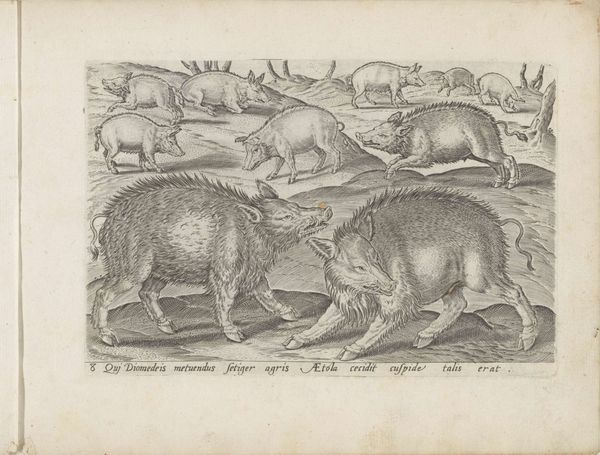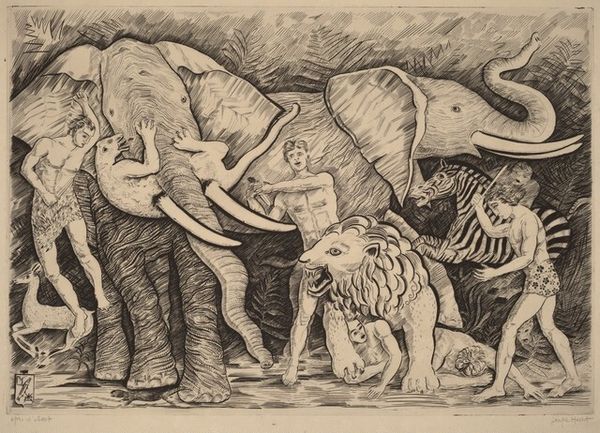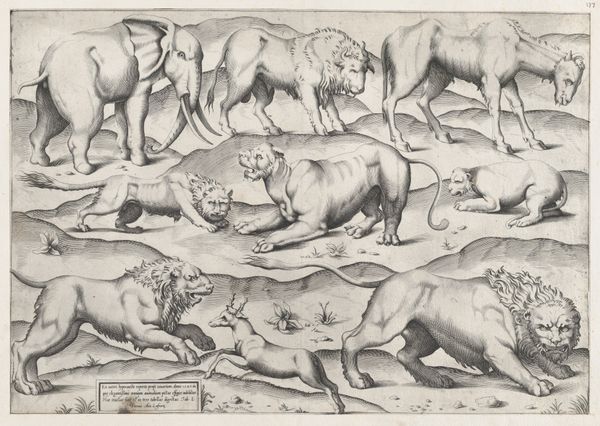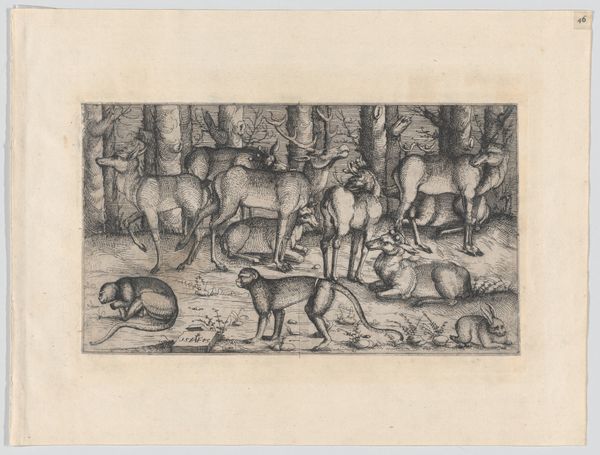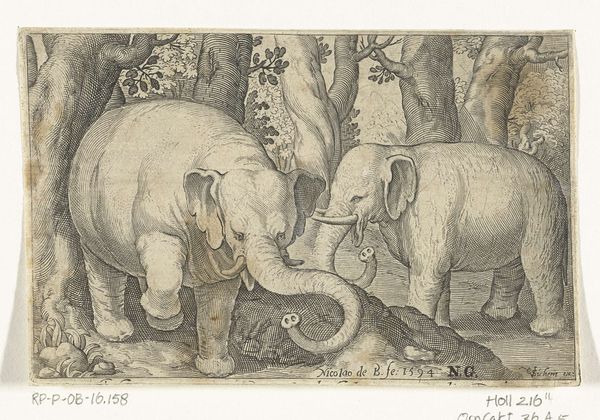
Speculum Romanae Magnificentiae: Wild Animals, from antique wall paintings, plate 3 1547
0:00
0:00
drawing, print
#
drawing
# print
#
11_renaissance
#
men
Dimensions: sheet: 11 5/8 x 15 7/8 in. (29.5 x 40.4 cm) mount: 14 3/8 x 19 9/16 in. (36.5 x 49.7 cm)
Copyright: Public Domain
Curator: The sheer number of exotic creatures depicted is remarkable! There’s such detail etched into this crowded space. Editor: This is "Speculum Romanae Magnificentiae: Wild Animals, from antique wall paintings, plate 3," created around 1547. These prints were made in workshops as documents meant to both preserve and distribute ancient art. Curator: And by anonymous hands, interestingly! The materials tell their own story, it's not just about singular artistic genius. This print is a material witness to cultural values and priorities through reproduction and labor, and the desire for visual documentation using contemporary technologies like printmaking to access ancient treasures. Editor: Exactly. The ‘wild animals’ and men become a potent visual symbol of power, reflecting European colonialism and the objectification of both nature and non-European peoples. Consider these images traveling throughout Europe, reinforcing cultural hierarchies. The power of classification at play. Curator: But the level of production itself intrigues me. Were these images widely accessible, shaping perceptions among common folk, or primarily circulating among elite circles influencing powerful tastes and design trends? Who were the consumers driving the production? Editor: Great questions! It's about tracing the impact of the consumption, in this case across class lines as new markets rose, but it's about access too. How did access change ideas about race, imperialism, and global hierarchies? How do exoticizing images feed the power structures that create inequality, then and now? Curator: The animals become products, too, a part of this market of images and commodities. I hadn't considered it that way before. And while exotic, what was the accuracy of the portrayal? It affects consumption of information, and even our modern understanding. Editor: Yes! Consider the role of the giraffe in the lower right corner, included here with camels and elephants as symbols of status, and wealth... Their presence is tied directly to colonial trade routes. It creates an environment. Curator: Understanding production and labor in these printed images invites discussion of cultural values beyond purely aesthetics. A nice reminder to interrogate history’s underlying structures. Editor: Agreed. By examining the image’s context, we expose uncomfortable truths and deepen our appreciation for the work’s social importance and material power.
Comments
No comments
Be the first to comment and join the conversation on the ultimate creative platform.
